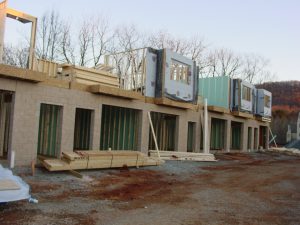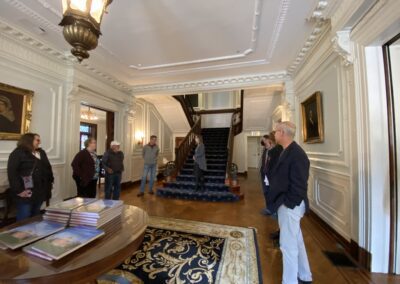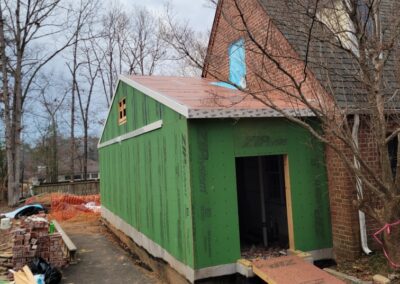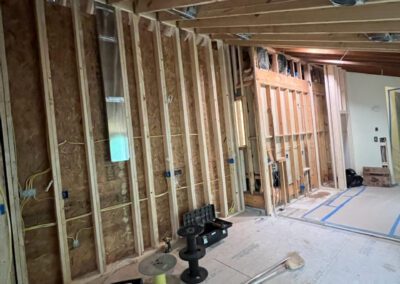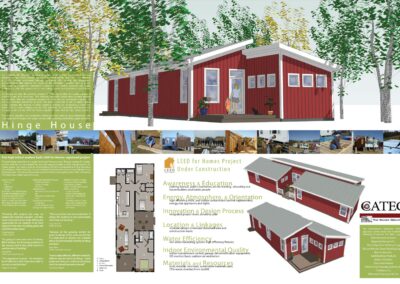Uncontrolled moisture can cause significant damage to your home as well as your health, furniture, and finishes. Mold is not the issue but rather a symptom of the moisture problem that exists. There are many types of moisture issues in your home, not all of them are visible, but all are destructive. Some examples include:
- Bulk Water intrusion from grading that does not allow moisture to drain away from the home
- Failed or incorrect flashing details allowing infiltration of bulk moisture into the structure
- Humidity issues caused by ineffective building science strategies
- Condensation on cold surfaces
- Wet building materials being used during construction
Grading Issues – A good rule of thumb is that the grade around a building should slope 1/4″ per foot for 10′ to keep the bulk moisture from draining back into the building. This protects from erosion undermining the structure, moisture issues in basements and crawl spaces, and moisture wicking up exterior wood materials.
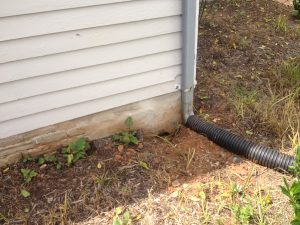
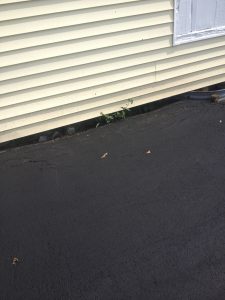
Flashing Details – Proper flashing will keep the bulk moisture that hits surfaces from entering the building. These details are most important around windows, doors, roof penetrations, deck and porch intersections, and elevation changes. Controlling bulk moisture through proper flashing is critical to the durability of the home.
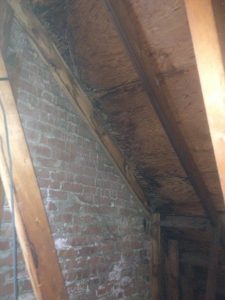
Humidity Issues – This is the hardest problem to see because it damages slowly. Humidity exists in all homes, but it is not controlled equally. The building ventilation system coupled with the mechanical dehumidification system need to be designed appropriately. Humidity comes from daily living activities, burning wood, cooking, and taking showers. If proper care is not taken to remove the humidity, you will see evidence of this through mold growth on wall surfaces among other places.
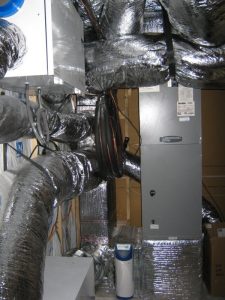
Condensation – Usually occurring inside the wall cavity, condensation causes incredible damage. It can destroy the structural integrity of the building pulling in insect damage and rot. Condensation occurs when warm moist air hits a cool surface. This often happens inside crawl spaces or in wall cavities.
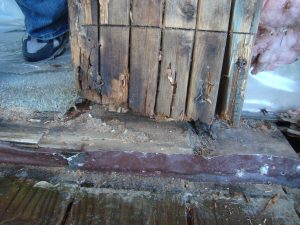
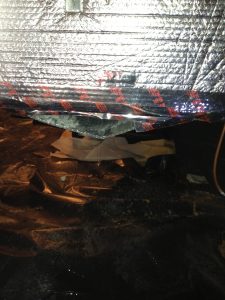
Wet building materials – The easiest moisture issue to control, it is also more common than you think. Proper storage and installation of building materials during construction can eliminate this issue all together. However, a heavy rainstorm during construction will offset those precautions. Careful attention in all phases of construction is required and a flexible schedule to delay enclosing wet materials is needed to prevent damage from wet building materials.
